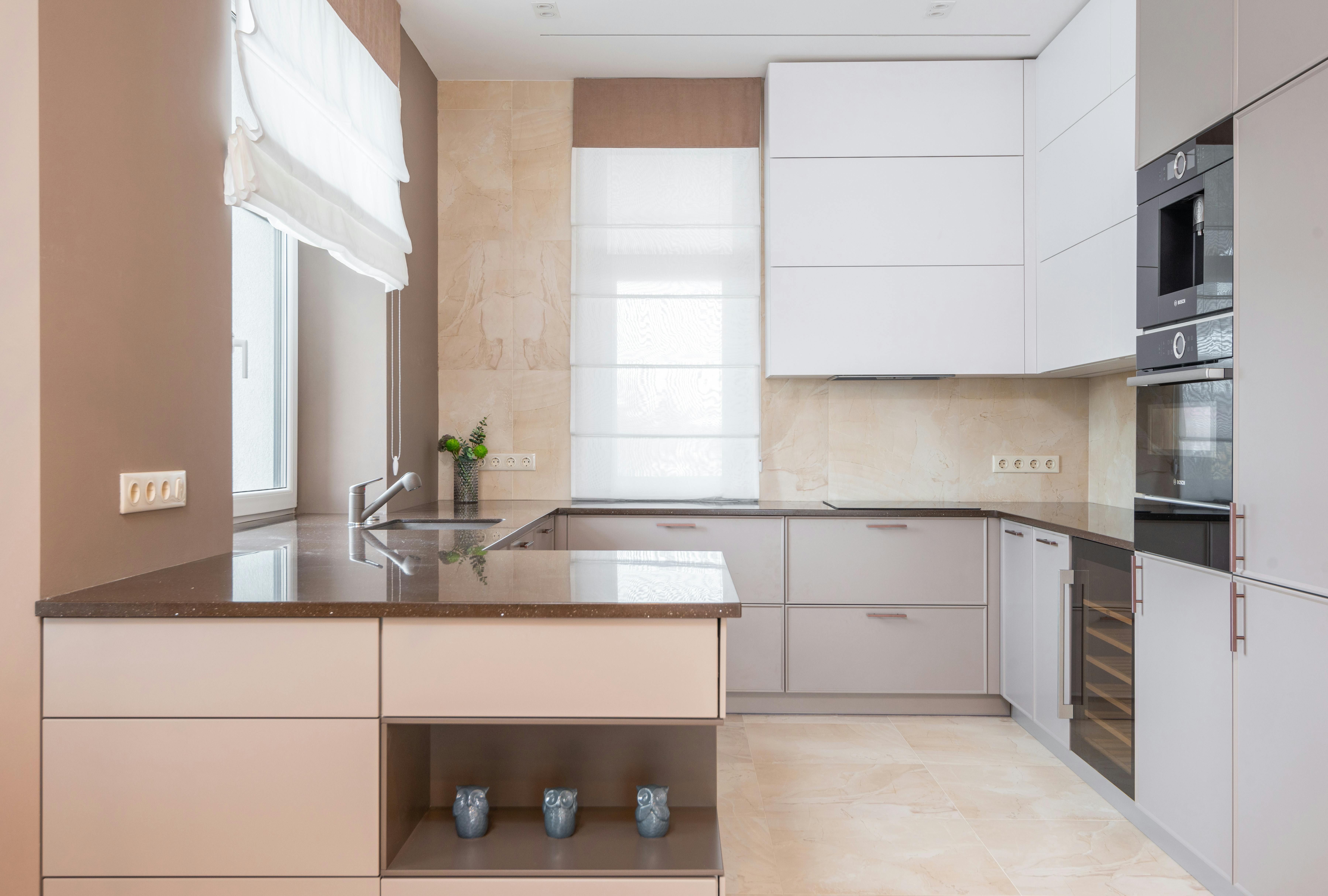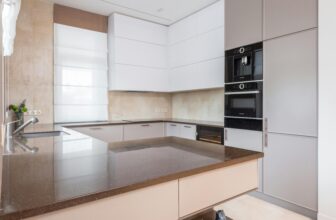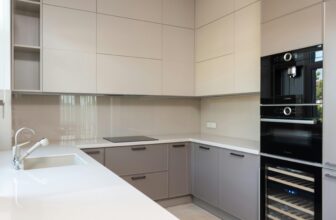Proper maintenance is the key to maximizing your wall oven’s performance, longevity, and safety. A well-maintained wall oven can serve your household reliably for 15-20 years, while neglected units often fail prematurely and perform poorly. Before diving into maintenance routines, ensure you’ve chosen the right oven for your needs by reviewing our comprehensive wall oven guide for the latest models and features.
Daily Maintenance Habits
Simple daily practices prevent major problems and extend your oven’s lifespan significantly. These habits take minutes but save hours of deep cleaning later.
After Each Use:
- Wipe down interior surfaces while slightly warm
- Remove crumbs and spills immediately
- Check door seals for food particles
- Ensure oven light works properly
- Verify door closes completely
Immediate Spill Response: When spills occur during cooking, address them promptly. Turn off the oven, allow slight cooling, then clean with damp cloth. This prevents burning and permanent staining.
Ventilation Maintenance: Keep exhaust vents clear of obstructions. Blocked vents cause overheating and reduce efficiency. Check that nothing blocks air circulation around the unit.
Temperature Monitoring: Notice any unusual temperature variations or extended preheating times. These early indicators help identify problems before they become major issues.
Weekly Cleaning Routines
Consistent weekly cleaning prevents buildup and maintains optimal performance. Dedicate 15-20 minutes weekly to these essential tasks.
Interior Cleaning:
- Remove racks and soak in warm soapy water
- Wipe interior walls with mild detergent solution
- Clean oven floor thoroughly, removing all debris
- Polish stainless steel surfaces with appropriate cleaner
Exterior Maintenance:
- Clean control panel with electronics-safe cleaner
- Wipe down exterior surfaces
- Check and clean door hinges
- Inspect electrical connections visually
Glass Door Care:
- Use glass cleaner designed for oven doors
- Remove stubborn spots with plastic scraper
- Ensure door seals are clean and intact
- Check door alignment and smooth operation
Rack Maintenance: Oven racks require regular attention to maintain smooth operation and prevent corrosion.
Proper Rack Care:
- Soak in warm soapy water weekly
- Use soft brush for stubborn spots
- Dry thoroughly to prevent rust
- Apply light cooking oil to prevent sticking
Monthly Deep Cleaning
Monthly deep cleaning addresses areas that daily and weekly maintenance cannot reach. This intensive process maintains peak performance.
Self-Cleaning Cycle: If your oven has self-cleaning capability, use it monthly for optimal results. The high-heat cycle burns off food residue and grease.
Self-Cleaning Process:
- Remove all racks and accessories
- Wipe away loose debris
- Secure pets and ensure ventilation
- Run complete self-cleaning cycle
- Allow complete cooling before opening
- Wipe away ash residue
Manual Deep Cleaning: For ovens without self-cleaning, manual deep cleaning is essential.
Deep Cleaning Steps:
- Apply commercial oven cleaner following manufacturer instructions
- Allow proper dwell time for chemical action
- Scrub with non-abrasive tools
- Rinse thoroughly with clean water
- Dry completely before use
Ventilation System Cleaning: Monthly ventilation cleaning ensures proper air circulation and prevents overheating.
According to the International Association of Certified Home Inspectors, proper ventilation maintenance prevents 70% of oven-related problems.
Quarterly Professional Care
Some maintenance tasks require professional expertise or specialized tools. Quarterly professional attention prevents major repairs.
Professional Services:
- Door seal inspection and replacement
- Thermostat calibration verification
- Electrical connection inspection
- Heating element testing
- Control system diagnostic
Calibration Verification: Oven temperature accuracy degrades over time. Professional calibration ensures consistent cooking results and food safety.
Calibration Process:
- Professional thermometer verification
- Thermostat adjustment if needed
- Documentation of calibration results
- Recommendation for future calibration schedule
Electrical Safety Inspection: High-voltage wall ovens require periodic electrical inspection for safety and performance.
Inspection Elements:
- Wire condition and connections
- Circuit breaker functionality
- Grounding system integrity
- Voltage stability verification
Annual Calibration and Inspection
Comprehensive annual inspection identifies potential problems before they cause failures or safety hazards.
Complete System Evaluation:
- Heating element condition assessment
- Door seal integrity verification
- Control system functionality testing
- Insulation effectiveness evaluation
- Overall performance benchmarking
Replacement Planning: Annual inspections help plan for component replacements before failures occur.
Troubleshooting Common Issues
Understanding common problems helps distinguish between simple fixes and professional repairs.
Temperature Problems:
- Symptom: Uneven cooking or incorrect temperatures
- Possible Causes: Faulty thermostat, damaged door seals, blocked vents
- DIY Solutions: Check seals, clear vents, verify door closure
- Professional Required: Thermostat replacement, electrical issues
Door Issues:
- Symptom: Door won’t close properly or seal
- Possible Causes: Worn hinges, damaged seals, warped door
- DIY Solutions: Clean hinges, adjust alignment
- Professional Required: Hinge replacement, door realignment
Electrical Problems:
- Symptom: Oven won’t turn on or operates intermittently
- Possible Causes: Faulty connections, damaged wiring, control board failure
- DIY Solutions: Check circuit breaker, verify power supply
- Professional Required: All electrical repairs for safety
When to Call Professionals
Knowing when to seek professional help prevents safety hazards and costly mistakes.
Immediate Professional Attention Required:
- Electrical sparks or burning smells
- Gas odors (for gas ovens)
- Door that won’t stay closed
- Visible damage to heating elements
- Control panel malfunctions
Recommended Professional Services:
- Annual safety inspections
- Thermostat calibration
- Electrical system evaluation
- Warranty-covered repairs
- Complex component replacement
DIY Limitations: While many maintenance tasks are DIY-friendly, electrical work and gas connections always require professional expertise.
Maintenance Cost Planning
Budgeting for maintenance prevents unexpected expenses and ensures proper care.
Annual Maintenance Budget:
- DIY Cleaning Supplies: £50-100
- Professional Inspection: £100-200
- Minor Repairs: £100-300
- Total Annual Budget: £250-600
Long-term Replacement Fund: Set aside funds for major component replacements to avoid financial stress when repairs are needed.
Cost-Saving Strategies:
- Perform regular DIY maintenance
- Address problems early
- Use manufacturer-approved parts
- Maintain warranty coverage
- Bundle professional services
Warranty Considerations: Maintain detailed maintenance records to support warranty claims. Many manufacturers require proof of proper maintenance for warranty coverage.
Consistent maintenance transforms your wall oven from a depreciating appliance into a reliable kitchen partner. The investment in proper care pays dividends through improved performance, extended lifespan, and maintained safety standards. Remember that prevention is always more cost-effective than repair, making regular maintenance an essential part of kitchen management.






